NBA 2K25 launches on September 6th, forcing players to start over with its hugely popular MyCareer suite and develop a player perfectly suited to their position and the user’s play style. Of all sports games with single-player careers, and even of the larger role-playing genre on which it’s based, NBA 2K is unique in that it poses an awkward question to players: What’s the point of playing a game like?
How much does an NBA 2K build cost?
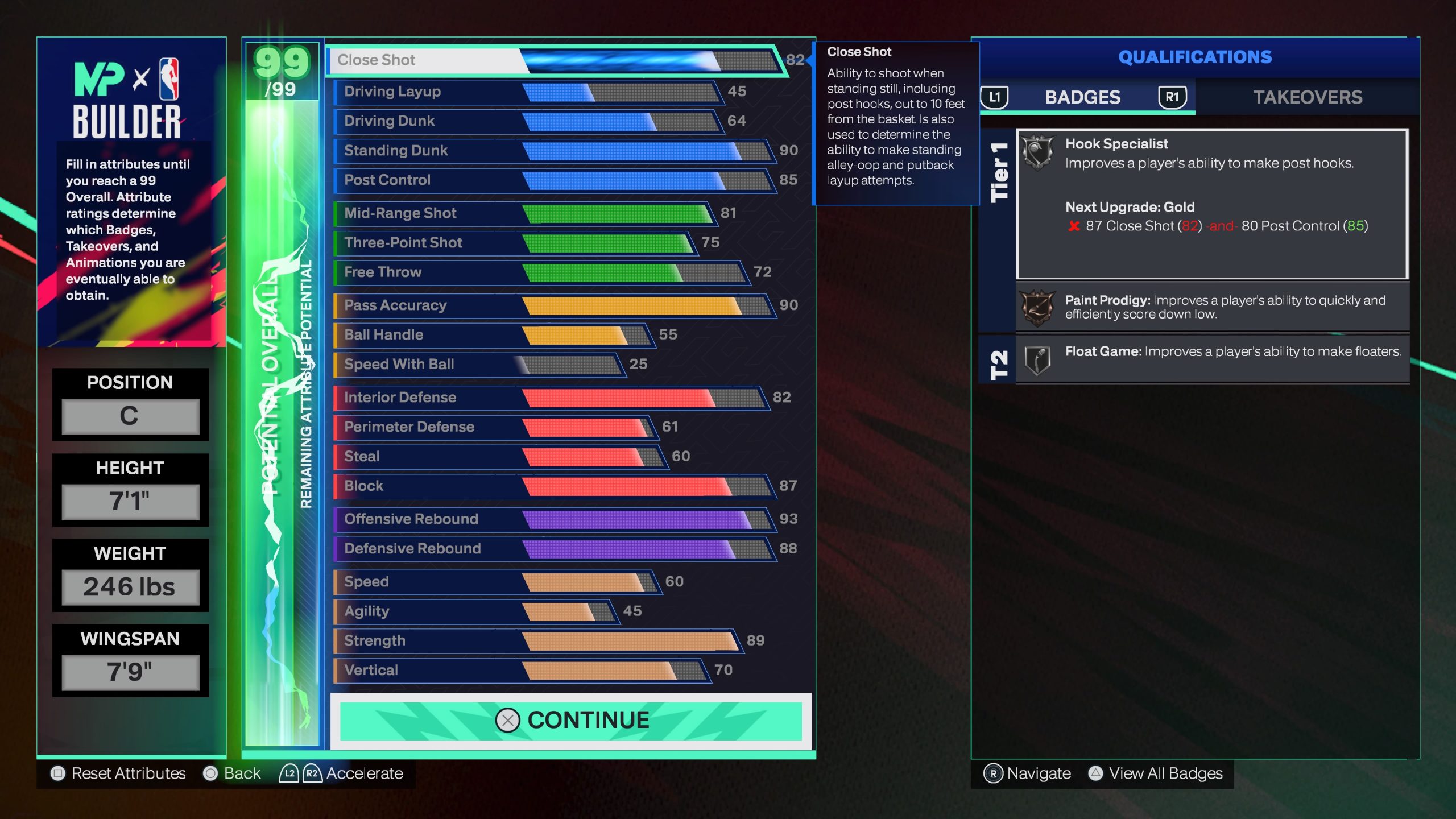
That’s because NBA 2K’s career mode advances players through the use of virtual currency, which can be purchased with real money. It’s literally a pay-to-win scenario, although there are some gates and brakes that prevent players from buying everything they want right away.
Perhaps this is tolerated because 2K Sports introduced the system over a decade ago – long before such plans would spark the outcry that they do today – and the fact that MyCareer is arguably the most popular mode in a globally best-selling and incredibly well-crafted series.
Still, it raises another consideration as players work on designing their virtual basketball player: Is there a way to more efficiently level up their created superstar, to optimize those underrated traits that make them more steaky than sizzling?
Let’s answer that question in this guide to building the best center in NBA 2K25, as well as four other positions coming soon. no.
NBA 2K’s progression and currency system is non-linear, continually improving each year and altering things like a player’s height depending on improved attributes, so that if you spend 100,000 virtual currency on a 60-rated player out of the box (the amount included in this year’s $99.99 All-Star Edition), you’re likely to get a player with an overall rating of 75, regardless of your build.
Additionally, it costs roughly 190,000 VC to instantly rank a player up to MyCareer’s starting overall cap of 85, with little regard for the order in which skills are upgraded.
So, we’ll list the costs and ratings of these builds, but keep in mind that they all follow the same trend in terms of cost, and the prices given are just to give you an idea of what you’re going to get.
Build Terminology Explained
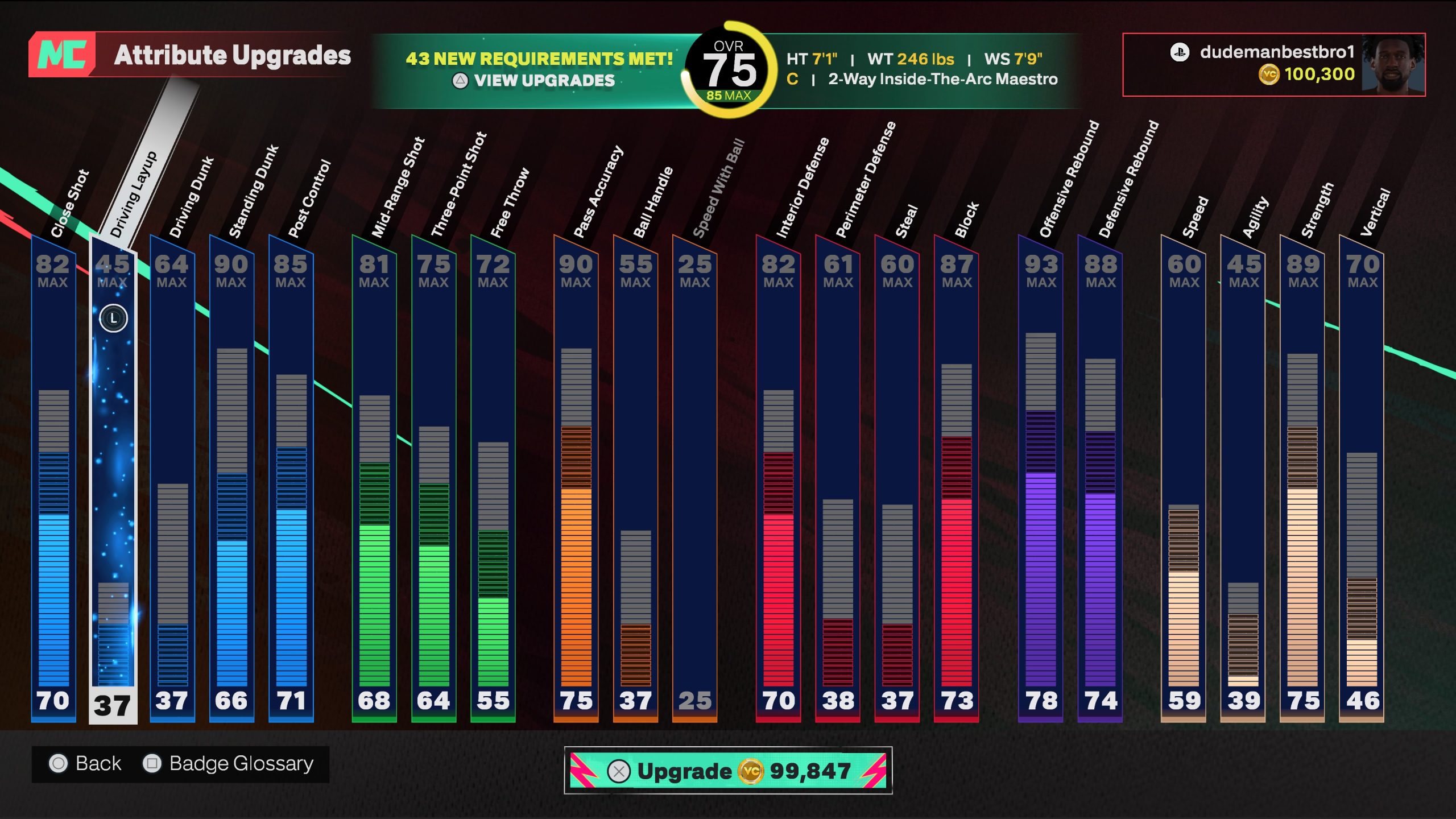
Build Order is a ranking of the importance of each attribute in building this player, taking into account the cost of a player of this physical makeup. Attributes that have a low return to OVR may appear higher in the build because they are very cheap, while attributes that are essential to the build may appear lower because they are very expensive.
Rating at 100,000 VC means the player’s overall rating if the build order is applied evenly until 100,000 is spent. Similarly, the cost at 85 rating is the amount of VC that would be spent if the build order was applied evenly until the 85 level cap is reached.
Some players prefer to max out their physical attributes (speed, strength, vertical, agility) and free throws at the beginning of their careers, as they either contribute very little to their overall rating or are gate points for certain animations. If this is a roleplaying or development avenue, we calculate the cost of this improvement separately so you know what you’re getting.
“Out-of-position attributes” even fully maxed out with this build will not add a single point back to your overall score on its own – it’s essentially a burden on the build. We’ve broken down the costs in case players prefer to max out early and focus on more important traits later on in their career when they have gained more VC to make stronger plays.
Best Center Build in NBA 2K25: 2-Way Inside the Arc Maestro
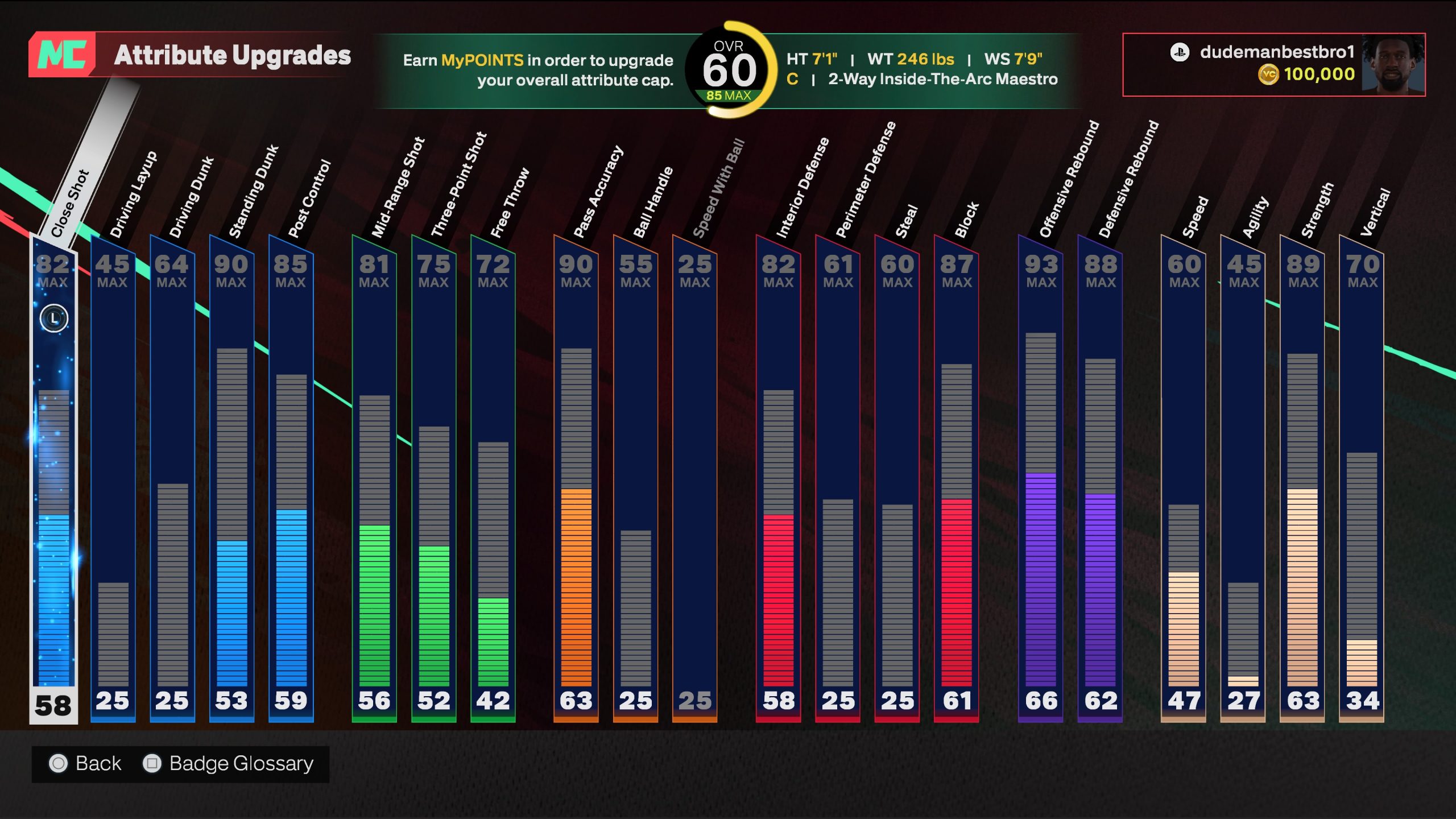
- height: 7 feet 1 inch
- Weight: 249 lbs.
- Wingspan: 7 feet 5 inches
- Rating for 100,000 VC: 75
- Cost at 85 rating: 189,937
- Cost to max out your physical and free throws: 34,671
- Cost to maximize out-of-position attributes: 2,995, because driving dunks are the only burdensome attribute that can be improved, not physical attributes or free throws.
- Rating with max physical and out-of-position attributes: 69 (cost 38682)
Best value: 3-point shot. It’s hard to beat the 3-point shot when you consider how little it costs compared to the value it brings, both in OVR rating and versatility in games over NBA competitions with AI. With low VC input, it’s a great additional dimension because it’s so high (52). Close-up shotHe is a must-have for big men on the baseline.
Least valuable: Mid-range shots. Similarly, for post-faders and step-back poppers, it seems counterintuitive to call it a bad value, but while mid-range contributes very little to OVR, it’s a useful, if not essential, attribute. Then, given that my play-calling coaches and AI teammates have barely set me up for a mid-range shot over the years, my resentment of developing a mid-range jumper into a big man who can hit a triple-double without it only deepens.
Maestro Production Order in Two-Way Arc
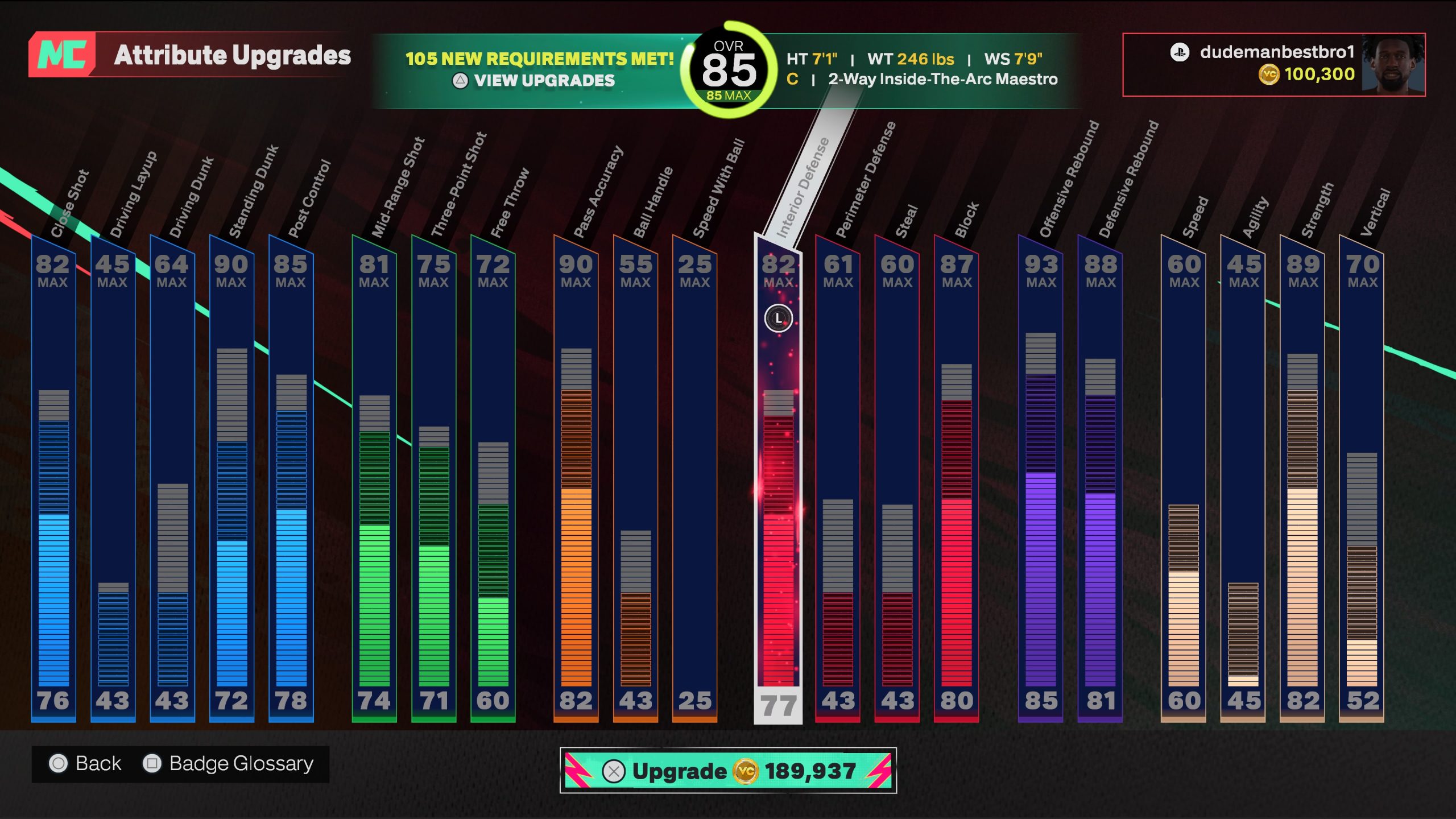
- Standing Dunk
- Three-point shot
- Strength
- Offensive Rebound
- Passing Accuracy
- Defensive Rebound
- block
- Post Control
- Internal Defense
- Close-up shot
- Free Throws
- vertical
- Mid-range shot
- Perimeter Defense
- Driving Dunk
- speed
- Agility
- Ball Handle
- theft
- Driving Layup
- Speed with the ball
- Tier 1 Badge Bronze: Bailout, Paint Genius, Unplackable.
- Tier 1 Badge Silver: Brickwall, Hook Specialist, Paint Patroller, Pogo Stick, Post Lockdown, Post Up Post, Set Shot Specialist, Multi-talented Visionary
- Tier 1 Badge Gold: Box out beast, break starter, post fade phenom, post powerhouse, rebound chaser, rise up,
- Tier 2 Badge Bronze: High Flying Denier, Interceptor
- Tier 2 Badge Silver: Aerial Wizard, Float Game, Off-ball Plague
- Tier 2 Badge Gold: Dimer
Reasons for choosing the 2-Way Inside the Arc Maestro for the center build
My favorite position in NBA 2K is center because the closer you are to the basket, the easier the game becomes. Other players fumble with their sticks trying to execute hadouken-level gesture combos to cross over their opponents. I prefer to pick up the ball, do a Serbian move, and then shove it into their grill.
Ideally, my center would function more as a true back-to-the-basket pivot — high in the post with forwards on the low block or baseline. Right now, the game rarely plays out like that. But I enjoy making passes out of double teams and racking up assists for my big men, a dopamine drip like no other in video game sports.
This build has one of the lowest deadweight burdens in its attributes that I’ve ever seen. The counter to that is to give the VC more mouths to feed. But there’s utility (and high value) in perimeter defense as well, given how often modern defenses force big men to pick guys off at the top of the key. 7’1″ centers are always going to be the slowest on the court, so they’ll rely on other attributes to get in position to hit that burden.
The best team at this center
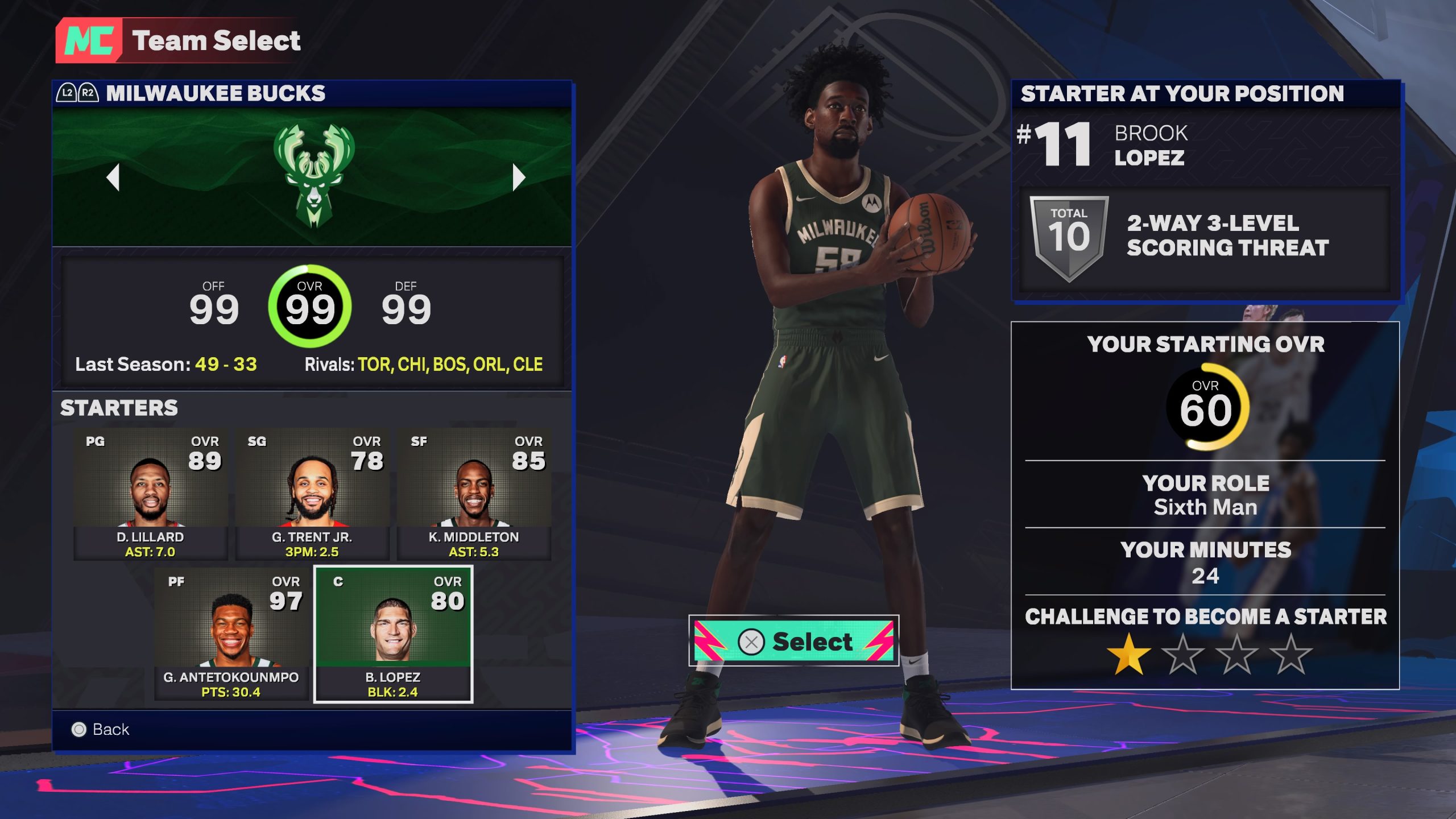
Milwaukee is ripe for a system change with the addition of 80-rated Brook Lopez, who is older than the 4 p.m. line at the Golden Corral buffet. The team is also 99-rated in every category, though it didn’t draft a center in 2024. Giannis Antetokounmpo is the star of the show, but any GM can find a role for the 7-foot-1 guy. The Pelicans and Warriors are the next best teams. Both have drafted centers, but neither has picked earlier than 21st. The Knicks are always a good choice, and Charlotte is a good choice if you’re a rebuild-minded team.
What about other positions?
- Here is the recommended point guard build, a three level scoring playmaker.
- Here is a recommended shooting guard build that will provide you with a scoring threat from three directions.
NBA 2K25 cryptocurrency price
These prices will be the same regardless of platform (Nintendo Switch, PlayStation 4, PlayStation 5, Windows PC, Xbox One, Xbox Series X).
- 5,000 VC: $1.99
- 15,000 VC: $4.99
- 35,000 VC: $9.99
- 75,000 VC: $19.99
- 200,000 VC: $49.99
- 450,000 VC: $99.99
- 700,000 VC: $149.99
Featured Image via 2K Sports (Screen Capture)
The post NBA 2K25 Center: How much does the perfect build cost? appeared first on ReadWrite







